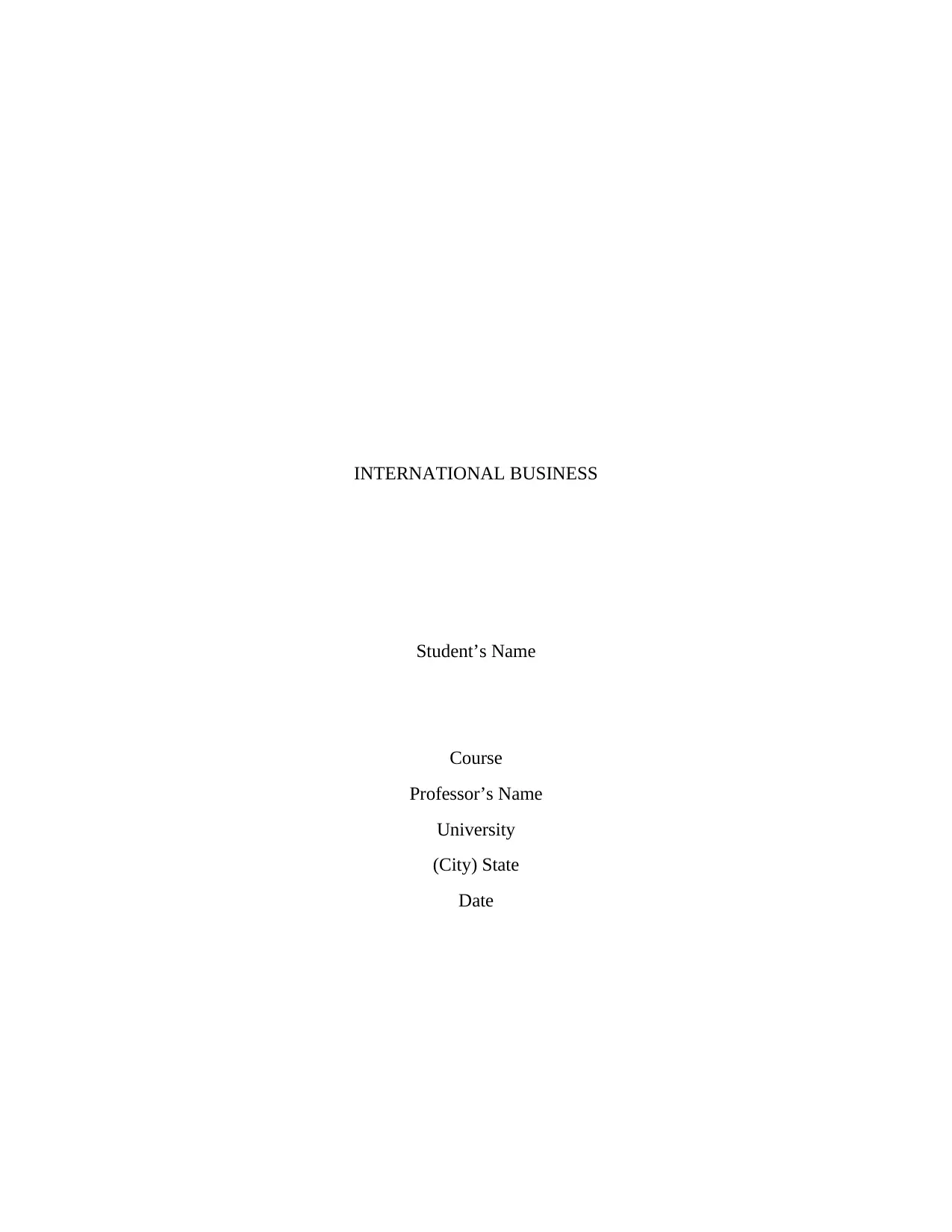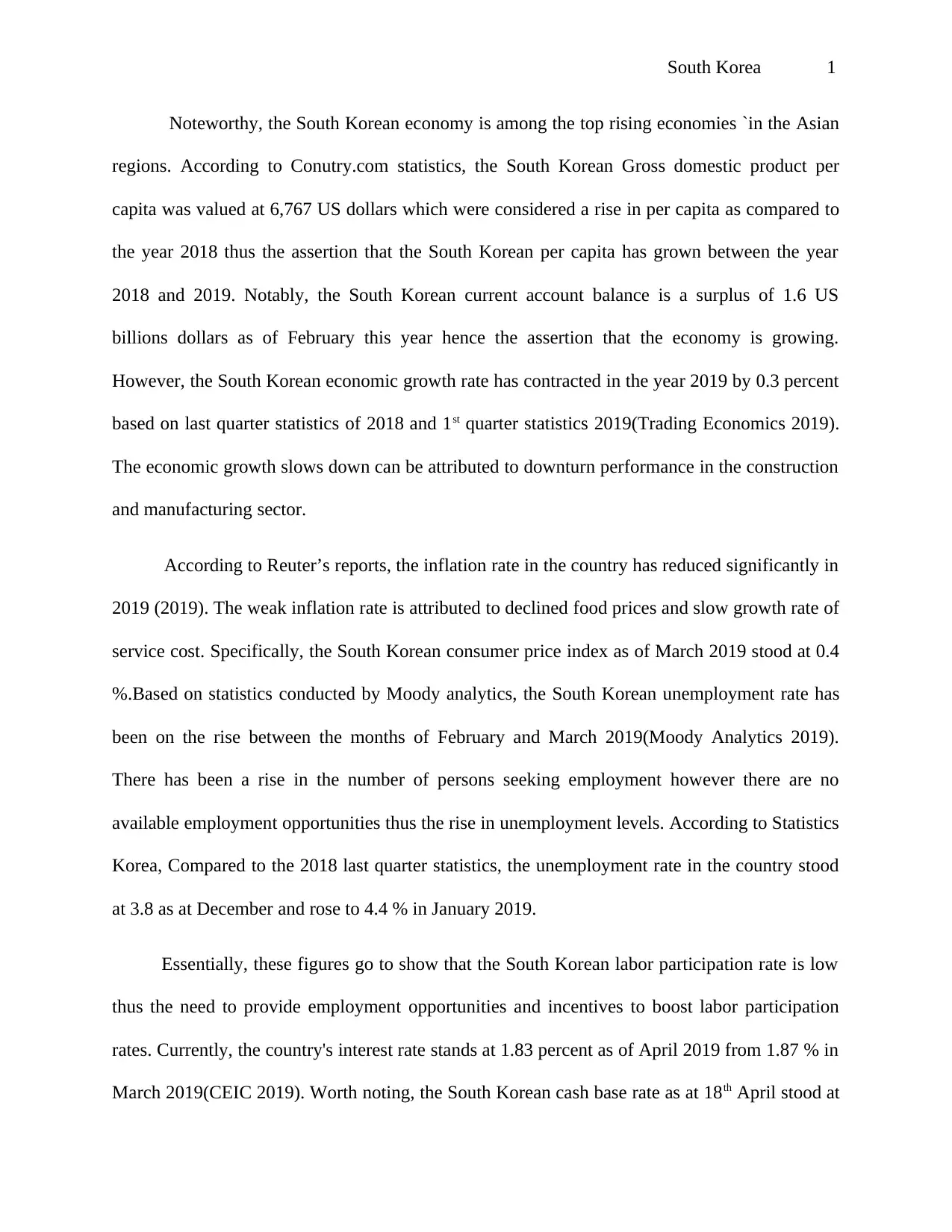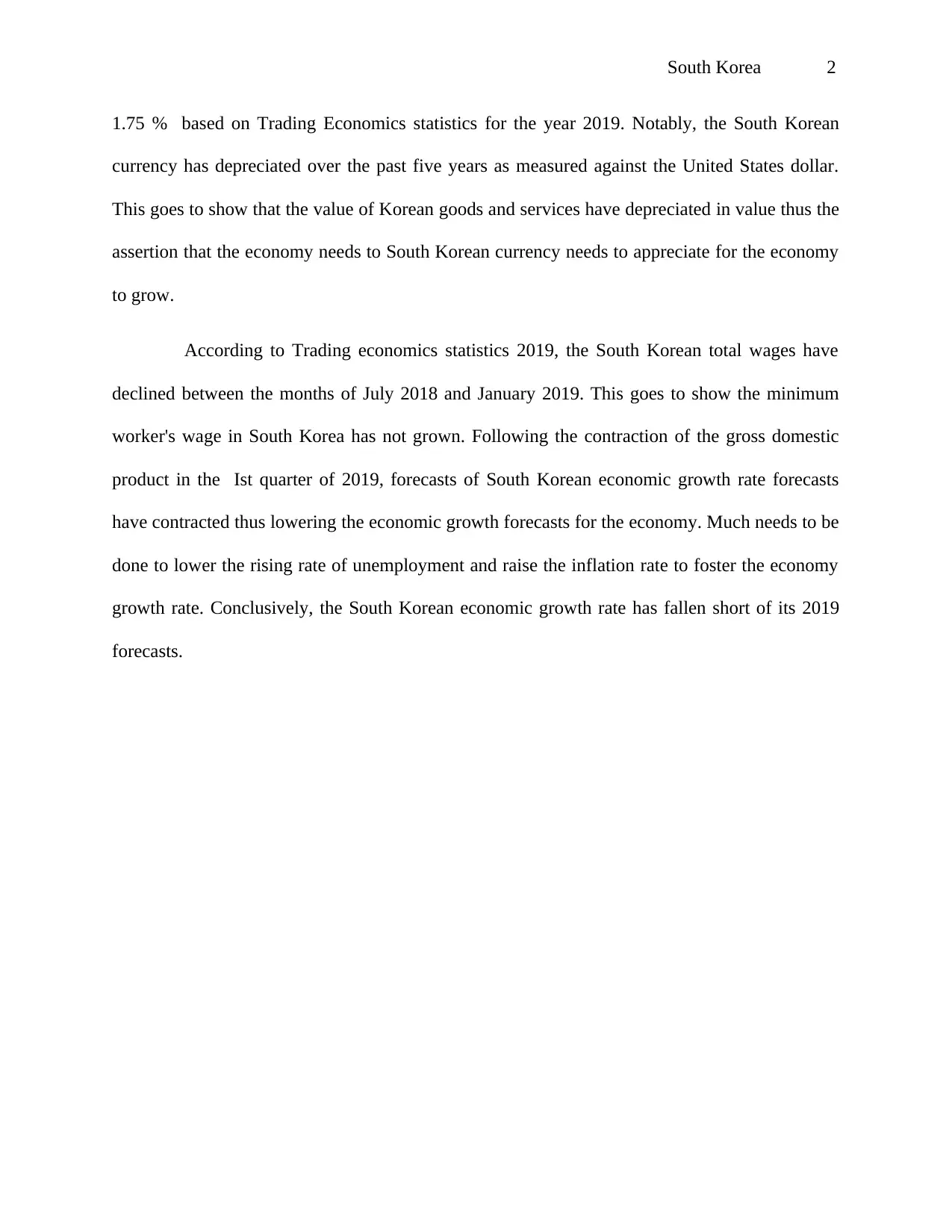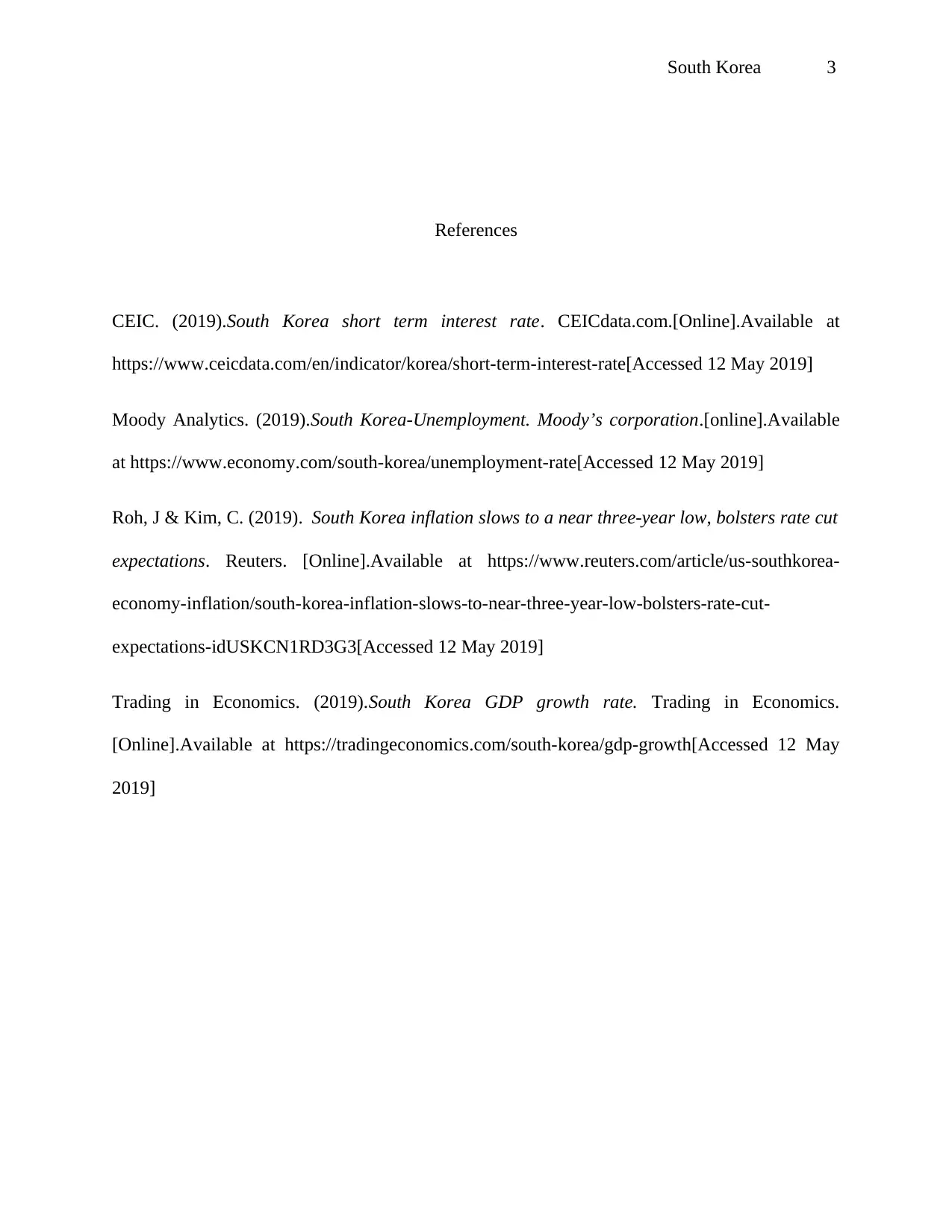International Business: South Korea's Economic Overview and Analysis
VerifiedAdded on 2023/03/23
|4
|714
|84
Presentation
AI Summary
This presentation provides an overview of the South Korean economy, focusing on key economic indicators and trends in 2019. The analysis covers the Gross Domestic Product (GDP) per capita, current account balance, and economic growth rate, highlighting a contraction in the economic growth rate attributed to the downturn in the construction and manufacturing sectors. The presentation also examines the inflation rate, which has reduced significantly due to declined food prices and slow growth rate of service costs, and the unemployment rate, which has been on the rise. Furthermore, it discusses the country's interest rate and the depreciation of the South Korean currency against the United States dollar, along with a decline in total wages. The conclusion emphasizes the need to address rising unemployment and raise the inflation rate to foster economic growth, as the 2019 forecasts for South Korea have fallen short.
1 out of 4











![[object Object]](/_next/static/media/star-bottom.7253800d.svg)